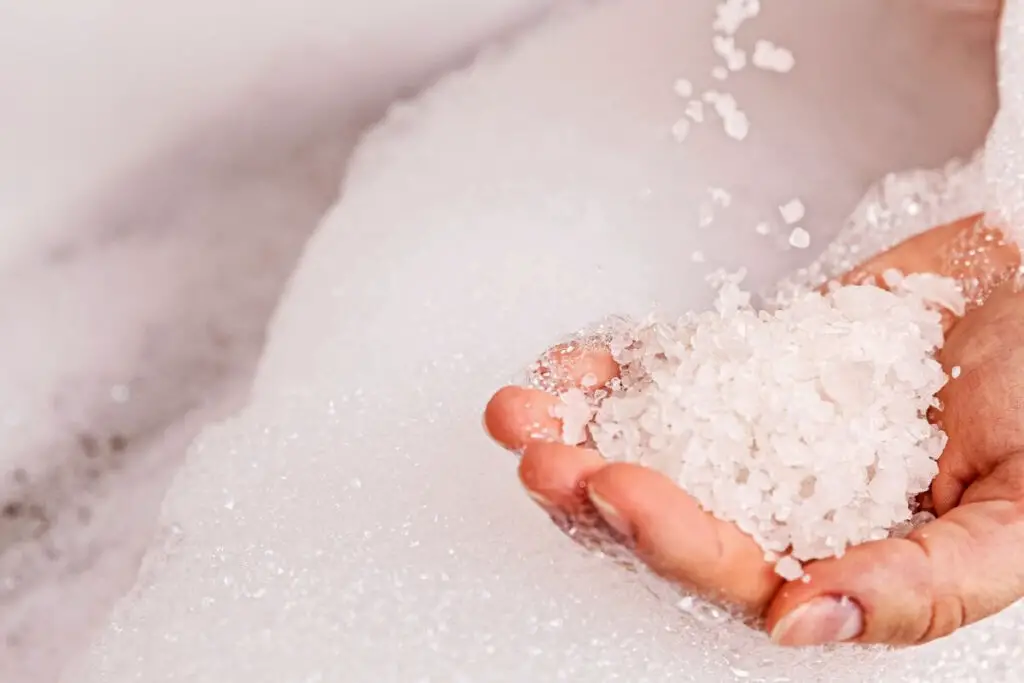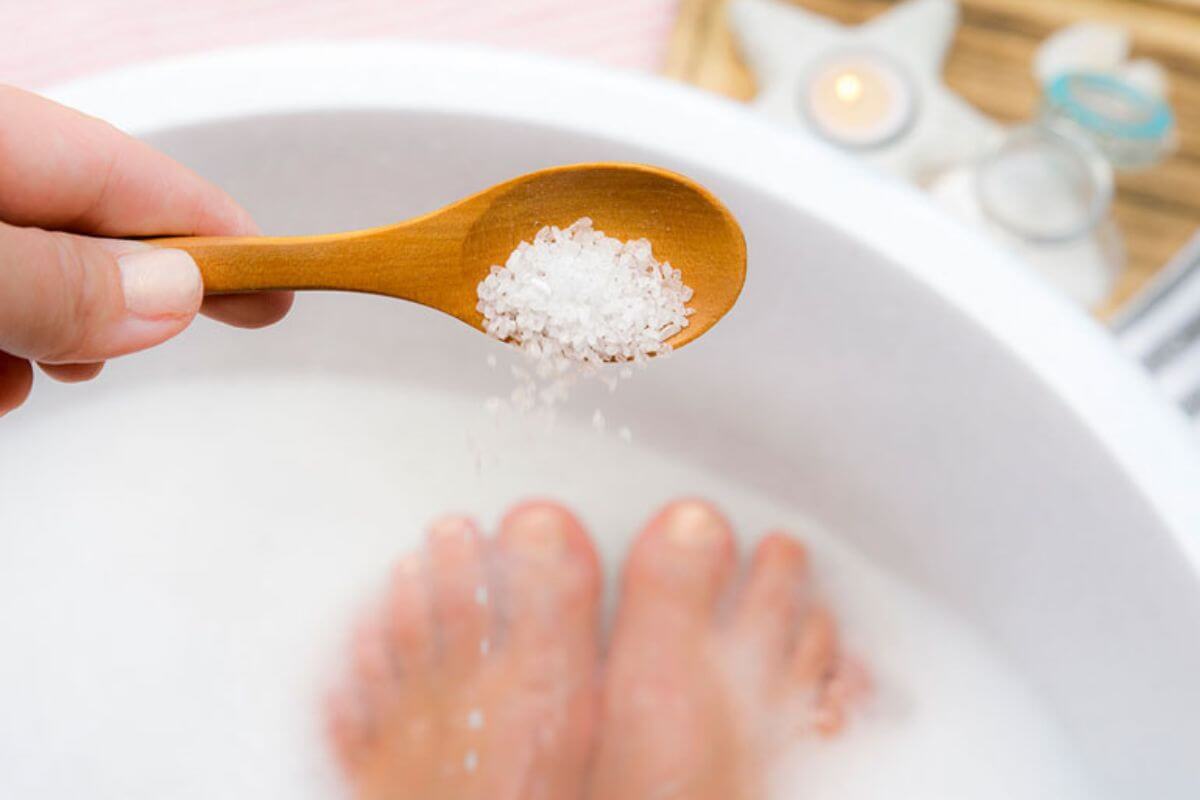The practice of using ice baths, also known as cold water immersion or cryotherapy, has gained popularity for its potential benefits in post-exercise recovery, reducing muscle soreness, and enhancing overall well-being. Adding Epsom salt to such baths has been a topic of discussion, raising questions about its efficacy and safety. In this comprehensive guide, we’ll explore the intersection of Epsom salt and ice baths, delving into the potential advantages, considerations, and best practices for incorporating these elements into your wellness routine.
Understanding Ice Baths and Their Benefits
1. Cold Water Immersion Basics
- Ice baths involve submerging the body, or specific body parts, in cold water, typically ranging from 10 to 15 degrees Celsius (50 to 59 degrees Fahrenheit). This practice is believed to constrict blood vessels, reduce inflammation, and potentially enhance recovery.
2. Potential Benefits of Ice Baths
Muscle Recovery:
Cold water immersion may aid in muscle recovery by reducing muscle soreness and inflammation after intense physical activity.
Improved Circulation:
The constriction and subsequent dilation of blood vessels during and after ice baths are thought to stimulate circulation, promoting the flushing out of metabolic waste products.
Integrating Epsom Salt into Ice Baths
1. What is Epsom Salt?
- Epsom salt, chemically known as magnesium sulfate, is a compound containing magnesium, sulfur, and oxygen. It has been traditionally used for various purposes, including as a remedy for muscle soreness and stress.

2. The Benefits of Epsom Salt
Magnesium Absorption:
Epsom salt is a source of magnesium, and some believe that the skin may absorb this mineral during a bath. Magnesium is essential for muscle and nerve function.
Relaxation:
The soothing properties of Epsom salt are thought to contribute to overall relaxation, potentially enhancing the calming effects of an ice bath.
Considerations and Best Practices
1. Temperature Balance
- Maintaining Cold Temperature: The primary goal of an ice bath is to provide a cold environment for the body. Adding Epsom salt should not compromise the overall cold temperature of the bath.
2. Magnesium Absorption
- Limited Absorption: While there is some evidence that magnesium can be absorbed through the skin, the extent to which Epsom salt contributes significantly to magnesium intake is debated. Relying solely on Epsom salt for magnesium needs may not be sufficient.
3. Skin Sensitivity
- Potential Irritation: Some individuals may experience skin irritation or allergies to certain bath additives, including Epsom salt. It’s advisable to test a small area of skin before incorporating it into a full ice bath.
4. Individual Preferences
- Personal Tolerance: The comfort level with the combination of cold water, ice, and Epsom salt varies among individuals. Gradual introduction and attention to personal tolerance are essential.
How to Prepare an Epsom Salt Ice Bath
1. Fill the Tub
Cold Water:
Start by filling the tub with cold water. The addition of ice can further lower the temperature.
2. Add Epsom Salt
Measuring:
Follow recommended guidelines for Epsom salt usage, typically around 1 to 2 cups per standard-sized bathtub.
Dissolving:
Stir the Epsom salt to ensure it dissolves in the water.
3. Incorporate Ice
Gradual Addition:
If using ice, add it gradually to achieve the desired temperature.
Monitoring:
Regularly monitor the water temperature to prevent excessive cold exposure.
4. Enjoy the Bath
Duration:
Limit the duration of the ice bath, typically around 10 to 15 minutes.
Observe Sensations:
Pay attention to sensations and adjust accordingly. If discomfort or prolonged numbness occurs, exit the bath.
Blending Cold Therapy with Soothing Elements
In conclusion, the question of whether you can put Epsom salt in an ice bath is met with a nuanced exploration of potential benefits and considerations. The combination holds promise for those seeking the muscle recovery advantages of cold water immersion coupled with the perceived relaxation benefits of Epsom salt.
As you embark on this wellness journey, it’s crucial to strike a balance, paying attention to temperature, individual sensitivities, and the desired outcomes. Gradual integration and mindfulness of personal comfort levels will contribute to a more enjoyable and potentially beneficial experience.
Remember that individual responses to cold therapy and Epsom salt vary, and consulting with a healthcare professional before incorporating these practices, especially for those with existing health conditions, is advisable. With informed choices and a thoughtful approach, you can tailor your ice bath experience to align with your wellness goals.
Fine-Tuning Your Epsom Salt Ice Bath Experience
5. Experimenting with Ratios
- Personalized Preferences: The ideal ratio of Epsom salt to water can vary based on personal preferences and the specific benefits you seek. Consider experimenting to find the balance that works best for you.
6. Adding Aromatherapy Elements
- Essential Oils: To enhance the relaxation aspect, consider adding a few drops of calming essential oils to the bath. Popular choices include lavender, chamomile, or eucalyptus.
7. Post-Bath Hydration
- Replenishing Fluids: Both ice baths and Epsom salt baths can contribute to dehydration. Ensure proper hydration by drinking water before and after the bath to replenish lost fluids.
Addressing Common Concerns
8. Skin Sensitivity and Allergies
- Patch Testing: Before immersing yourself in a full Epsom salt ice bath, perform a patch test to check for skin sensitivity or allergies. This precaution is especially crucial for individuals with sensitive skin.
9. Potential for Hypothermia
- Monitoring Temperature: Extended exposure to cold water, especially with added ice, raises the risk of hypothermia. Monitor your body’s response, and if you experience excessive shivering or discomfort, end the bath promptly.
10. Individual Health Considerations
- Consultation with Healthcare Professionals: Individuals with pre-existing health conditions, circulatory issues, or skin disorders should consult with healthcare professionals before incorporating Epsom salt ice baths into their routine.
Balancing the Therapeutic Blend
11. Alternating with Warm Baths
- Contrast Therapy: Consider alternating between Epsom salt ice baths and warm baths for a contrast therapy approach. This variation can provide benefits for both muscle recovery and relaxation.
12. Mindful Exit from the Bath
- Gradual Cooling Down: When exiting the ice bath, allow your body to gradually warm up. Sudden exposure to warm surroundings may lead to discomfort or shock.
Conclusion: Crafting Your Optimal Bathing Experience
In conclusion, the fusion of Epsom salt and ice baths opens the door to a customizable and potentially therapeutic bathing experience. By fine-tuning elements such as Epsom salt ratios, aromatherapy, and hydration, you can tailor the bath to your specific preferences and wellness goals.
As with any wellness practice, paying attention to your body’s signals and respecting your comfort levels are paramount. Whether you seek the muscle recovery benefits of cold therapy or the soothing properties of Epsom salt, this blended approach allows you to craft a bathing experience that aligns with your individual needs.
Remember that consistency is key when incorporating such practices into your routine. Regular but mindful engagement with Epsom salt ice baths can contribute to a holistic sense of well-being, aiding in both physical recovery and relaxation.
5 Unique FAQs About Epsom Salt Ice Baths
Q: Can I use any type of salt in an ice bath for similar benefits?
A: While Epsom salt is popular, other salts like sea salt or Himalayan salt may offer mineral benefits. However, the specific properties can differ, so research and experimentation are advisable.
Q: Is it safe to take an Epsom salt ice bath if I have sensitive skin?
A: Individuals with sensitive skin should perform a patch test and start with lower concentrations of Epsom salt. If irritation persists, it’s advisable to avoid or minimize its use.
Q: Can pregnant individuals benefit from Epsom salt ice baths?
A: Pregnant individuals should consult with their healthcare provider before engaging in Epsom salt ice baths or any practices involving temperature extremes.
Q: How frequently can I take Epsom salt ice baths for muscle recovery?
A: The frequency depends on individual needs and tolerance. Starting with once or twice a week and adjusting based on your body’s response is a recommended approach.
Q: Are there specific conditions for which Epsom salt ice baths are contraindicated?
A: Individuals with diabetes, cardiovascular issues, or open wounds should consult with healthcare professionals before incorporating Epsom salt ice baths into their routine.




